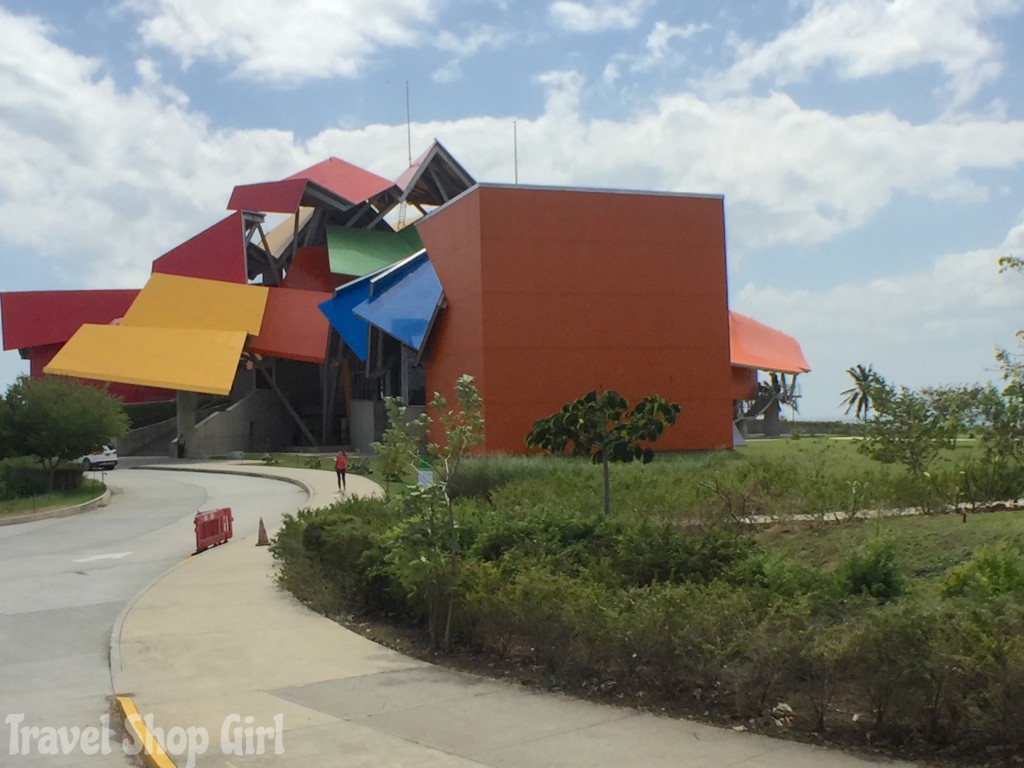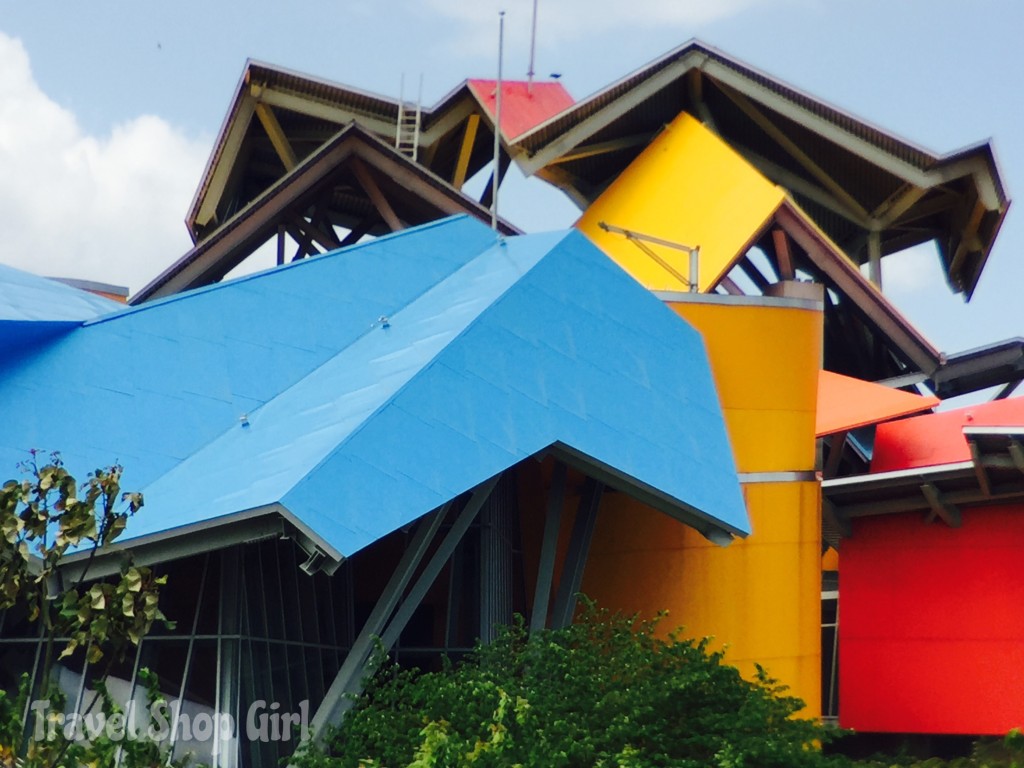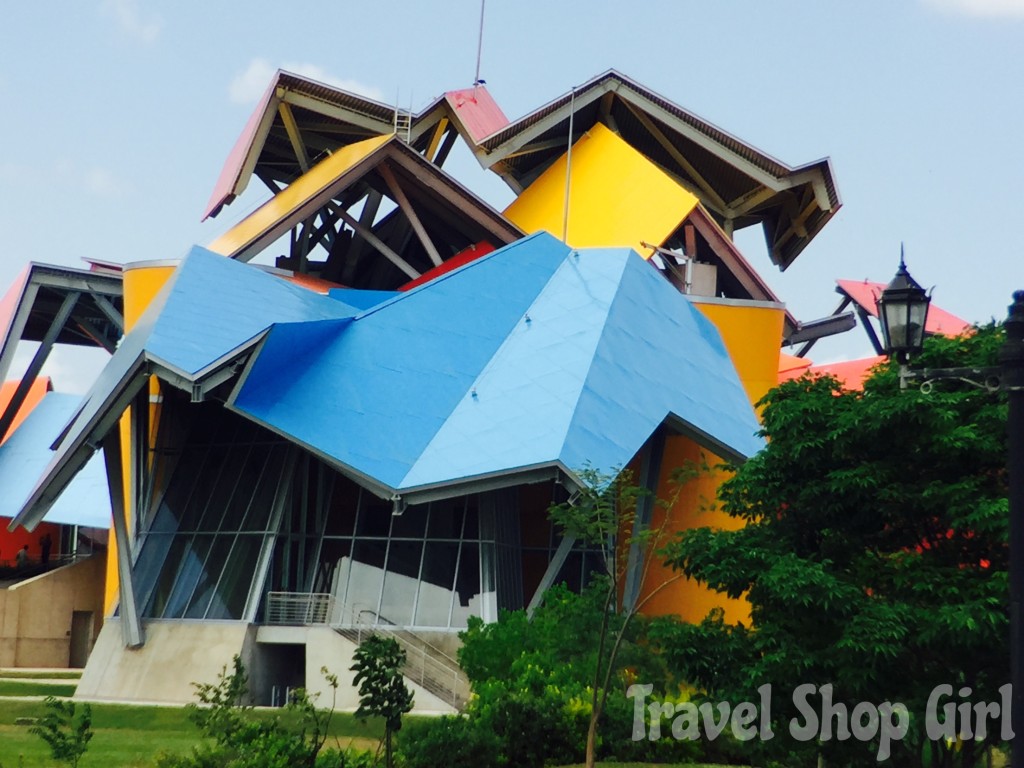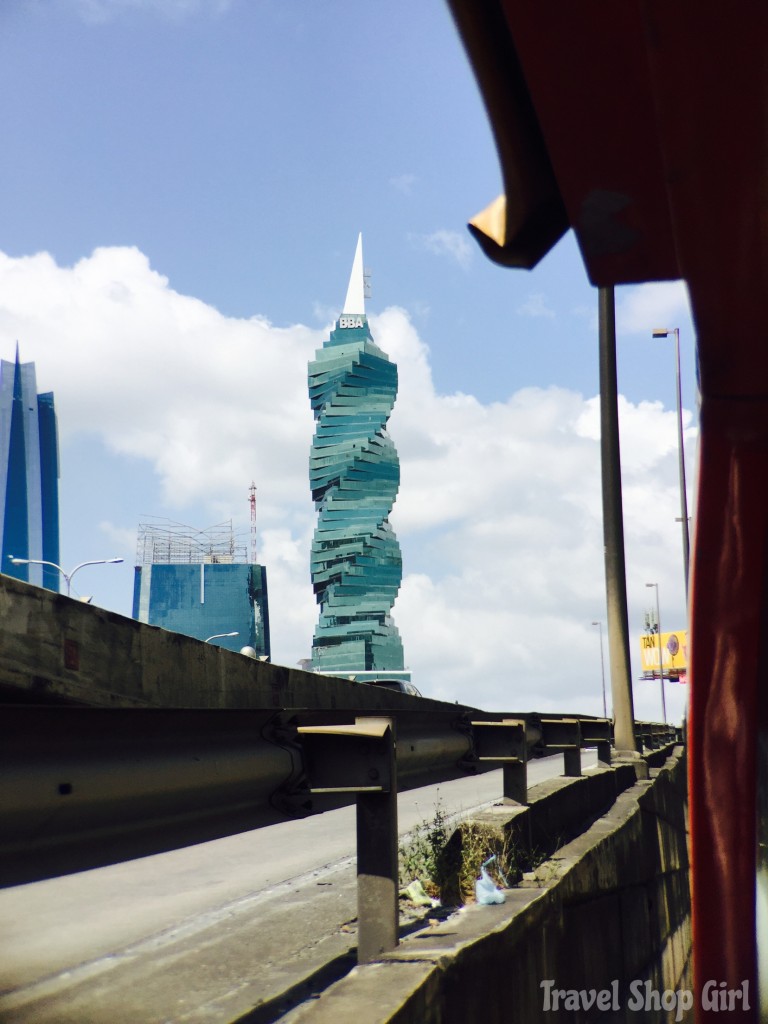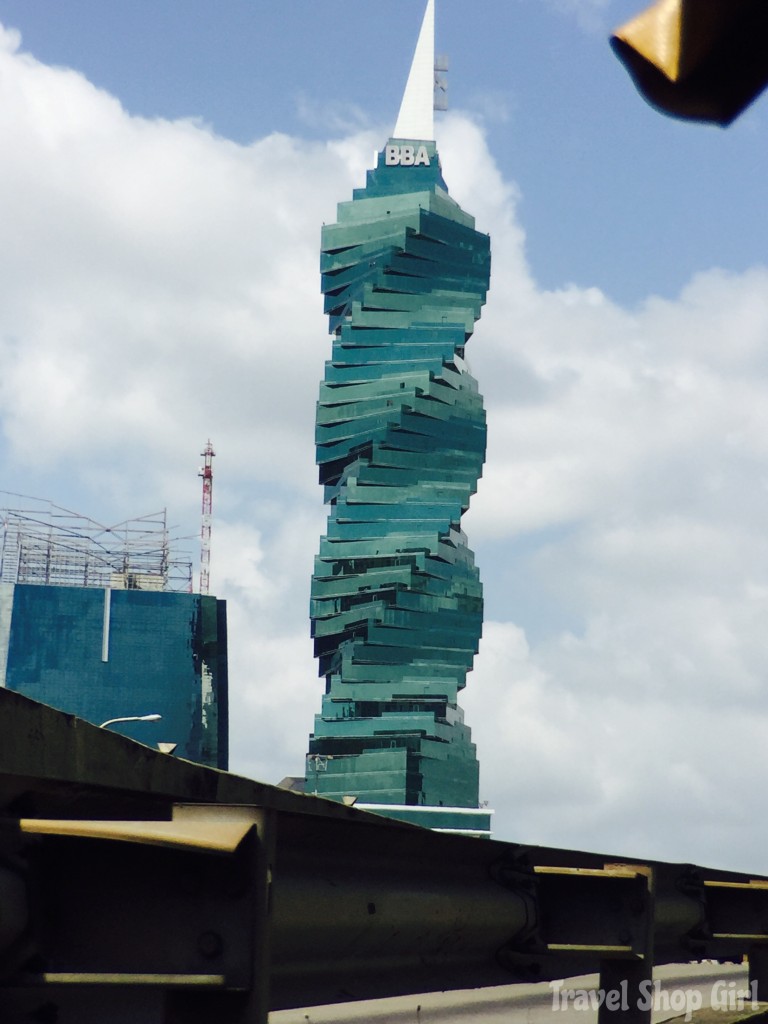Sightseeing in Panama City, Panama

There are lots of things to do in Panama City, the only issue is trying to fit all the sightseeing into the duration of the trip. You’ll have to find out what the easiest way to go sightseeing in Panama City is. During my recent trip to Panama, I wanted to go sightseeing in Panama City, but how? Should I hire a private tour guide or try something on my own? I love exploring new cities, but what if you don’t have a lot of time? For this trip I decided to tour around the city with City Sightseeing in Panama City. You might recognize them more as the “hop on hop off” red buses you see all over the world. Best part is that they’re affordable, convenient, and easy to use.
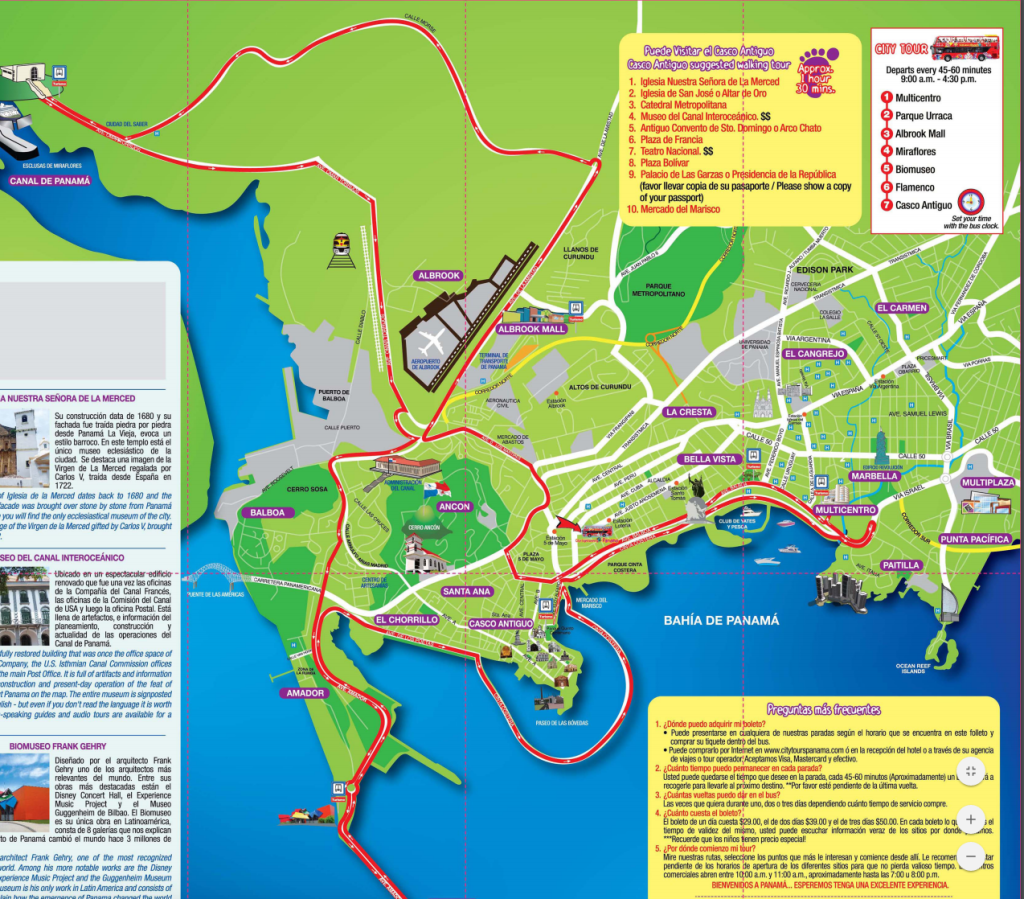
If you’re unfamiliar with the hop on hop off concept, it’s exactly as the name states. Get on at one point along the route and get back on again and ride as many times as you like within a certain time period. These bus tours show you the highlights of any given city and then you can get off the bus and enjoy any one or all of the sights at your leisure and get back on the bus again.
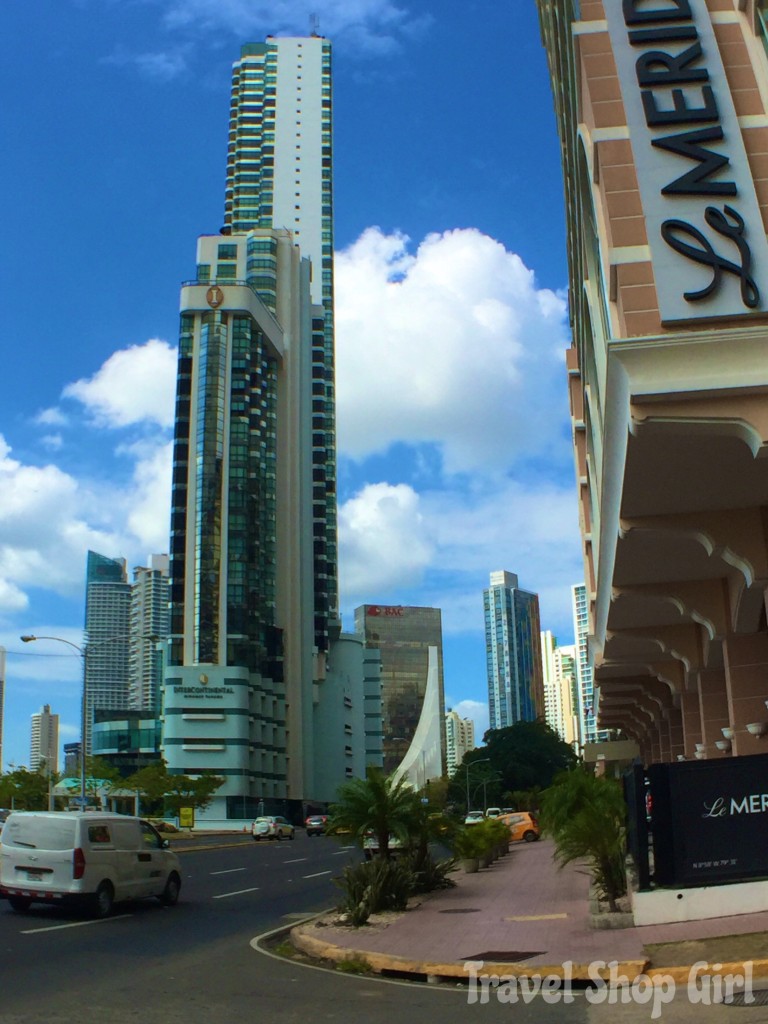
On my first full morning in Panama City, we chose the 24-hour option and decided to walk to`the first bus stop at Multicentro, a big mall on Avenida Balboa, about 15 minutes from our hotel, the Waldorf Astoria Panama.

While I purchased my ticket online, you can always buy yours from the ticket stand located only a few steps from the bus.
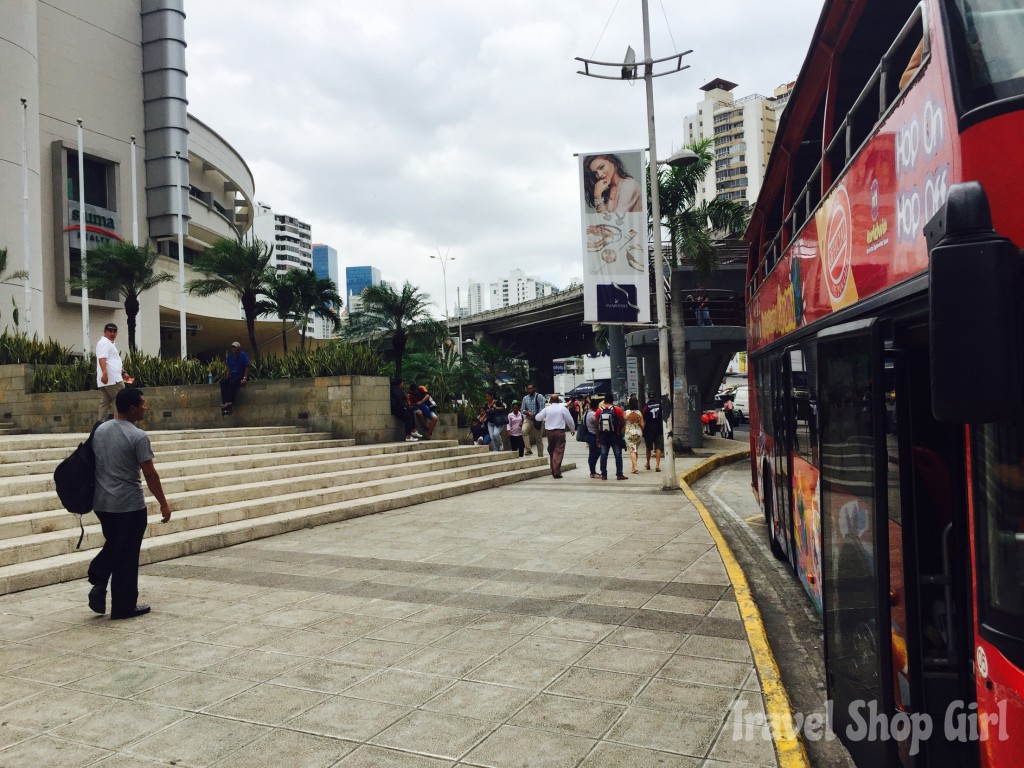
When you board the bus you’ll be handed headphones and a map of the bus route. Tours depart Multicentro from 9 am and the last bus leaves at 6 pm. Buses arrive at each of the six stops every 45-50 minutes to allow you time to explore. Each loop around the city takes approximately 1 hour and 45 minutes.
TSG Tip: It might take longer only because traffic in Panama City can be horrendous at times.
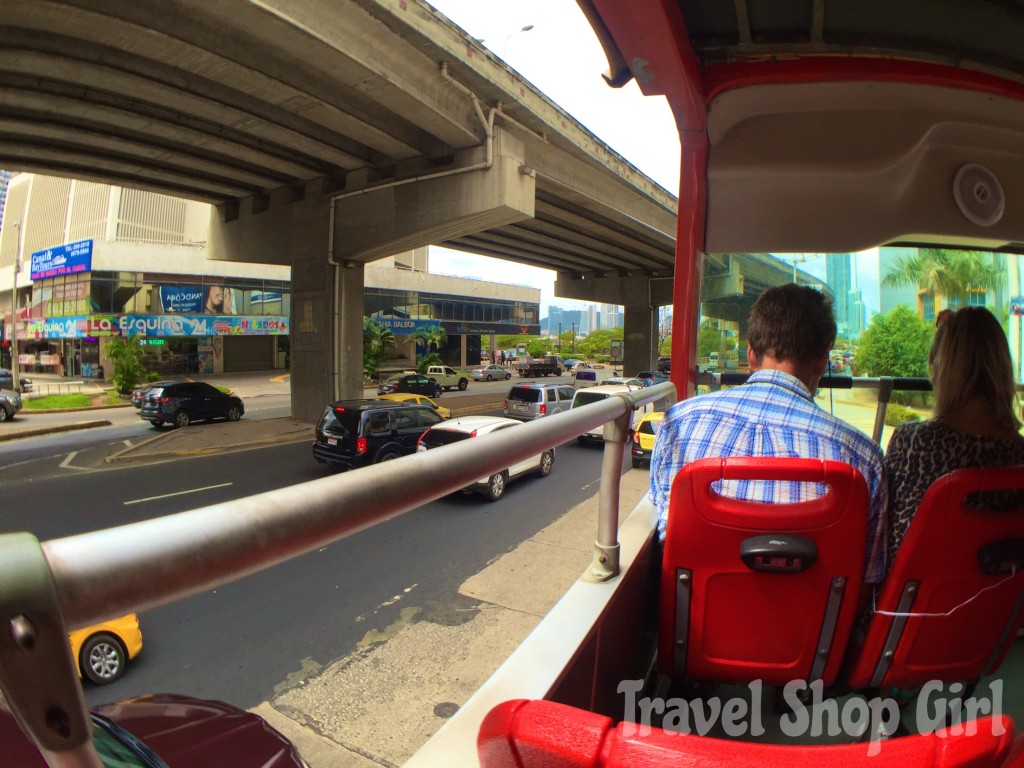
I found a comfortable seat on the upper level and made sure my headset was working before departing.

Within a few minutes we were off and we began to explore Panama City, a city full of culture and with far more high rise buildings than I ever expected to see.
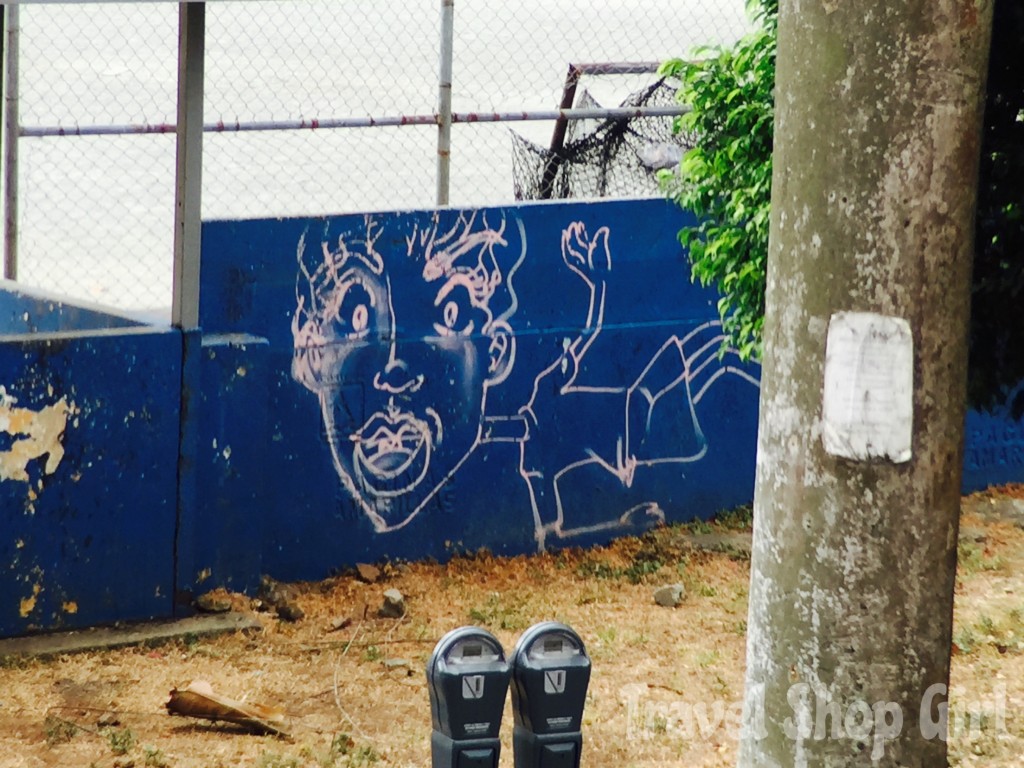
If you like street art like I do, you’ll find all kinds of interesting works all over the city.

On the way to the Panama Canal you’ll see a small public airport called Albrook “Marcos A. Gelabert” International Airport, previously Albrook Air Force Base.

Speaking of Albrook, seems like everyone visiting Panama City is interested in shopping and Albrook Mall, stop number two on the tour, is the place to go shopping. This is the biggest mall in all of Latin America and it has over 350 stores, over 100 restaurants, a movie theater, bowling alley, supermarket, casinos, and yes, even hotels.

Only about 20 minutes from Albrook Mall is the Panama Canal and stop number 3 for us as we continue sightseeing in Panama City.

Since we knew we were going on a tour of the Panama Canal the following day, we decided not to get off at this stop to go inside and look.

Here you can see the building where you enter and then view the Miraflores Lock.

On a side note, I hope that when you travel at home or abroad that you try to utilize some basic manners. These people in front of us clearly had none and had their feet all over the seat and ledges, some with their shoes off. At least make the attempt to be respectful of others.
That bright building with primary colors splashed over the roof is the Biomuseo and is stop number four on the hop on hop off bus route. The Biomuseo was designed by world renowned architect Frank Gehry, who also designed the Disney Concert Hall, the Experience Music Project, and the Guggenheim Museum in Bilbao. Gehry’s only work in Latin America, the Biomuseo consists of 8 galleries that explain how the emergence of Panama changed the world 3 million years ago.

Stop number five on the tour is Flamenco Island after crossing the Amador Causeway. This area was originally used by US military during World War II in an attempt to protect the Panama Canal because the Japanese Navy had plans to attack it, which thankfully never occurred.

Since that time much has changed and the Causeway Islands, made up of Naos (home to a research lab from the Smithsonian Tropical Research Institute), Culebra, Perico, and Flamenco which is now a spot for boating, tourism, and a disembarkation port for cruise ship passengers.
TSG Tip: Did you know that although the water looks inviting, you can’t go swimming here because of the sheer number of barracuda?

While the view of Panama City from here is impressive, I couldn’t tear my eyes away from the ships lining up to begin the trek of entering the Panama Canal.

Puente de las Americas or Bridge of the Americas was completed in 1962 by the United States at a cost of $20 million in an attempt to connect Colón and Panama. Until 2004 when the Centennial Bridge was built, it was the only canal crossing.

After the great views from the Amador Causeway, we then wind our way over to Casco Antiguo or Casco Viejo and stop number six on the tour.

Casco Antiguo or the Old Quarter is the historic district of Panama City. After Panama City was nearly destroyed, Casco Antiguo was completed and settled in 1673. Casco Antiguo was named an UNESCO World Heritage Site in 1999.

The bright colors of the neoclassical and art nouveau architecture within this area is nothing short of striking.


Before leaving Casco Antiguo, head over to the Mercado del Marisco or Fish Market for the freshest and most tasty ceviche you’ve ever experienced. I passed on it since as we know, fish is never on my menu.

As we head back into Panama City, you can’t help but stare at the Panama City skyline.

Probably my favorite building in Panama City is the F&F Tower or as I like to call it, the corkscrew building. Kind of looks like it’s made out of Legos yet it was voted as one of the top skyscrapers for architectural excellence in the Emporis Skyscraper Awards in 2011.
Balboa was considered the first European to cross America and was on an expedition in search of gold when he first spotted the Pacific Ocean. Click To Tweet
While traveling around the city you’ll probably see many monuments and maybe one of the many monuments to Vasco Nuñez de Balboa. Balboa was considered the first European to cross America and was on an expedition in search of gold when he first spotted the Pacific Ocean. This monument of Balboa was sculpted by Miguel Blan and Mariano Benlliure and was donated to the Panama by King Alfonso XIII of Spain in 1924. Even if you don’t spot one, you’ll hear “Balboa” everywhere you go from the street names to the currency, which is named after him.
TSG Tip: Did you know that Balboa’s influence reaches out beyond Panama? If you visit San Francisco, you’ll probably see Balboa Park, Balboa Theatre, Balboa High School, and so on.
Whether you’re planning an extended vacation or can only get away for a few days, you should definitely experience the easiest way sightseeing in Panama City to see all that it has to offer. Read my travel tips and more about my trip to Panama City here. Have you ever visited Panama City?




